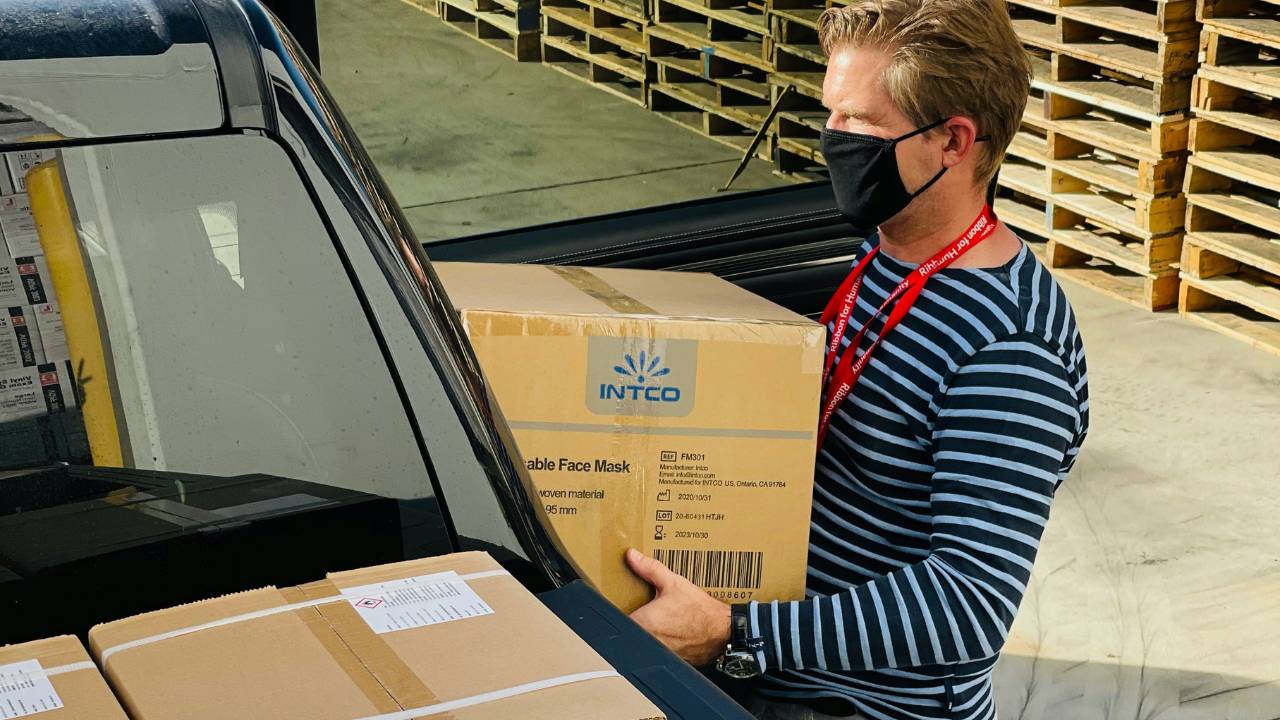A Complete Guide to Business Relocation
Relocating your business is a significant decision that comes with both opportunities and challenges. It’s a process that demands careful planning and consideration of numerous factors to ensure a transition that is as smooth as possible. From selecting the perfect new location that aligns with your business objectives to handling logistics and minimising operational downtime, every step should be meticulously strategized.
As you embark on the journey of moving your company, you’ll need to stay informed about the various processes involved. These range from the practicalities of physical moving to the legal implications and the impact it may have on your employees and customers. Support and understanding throughout this period are crucial for maintaining the stability of your business.
Handling the complexity of a business move doesn’t have to be a daunting endeavour. With the right guidance and resources at your disposal, you can navigate through the transition with confidence. This guide aims to equip you with the knowledge required to manage your business relocation effectively, ensuring that your company thrives in its new home.
Assessing the Need for Relocation
Before making a significant decision such as relocating your business, it’s crucial to carefully evaluate the reasons and implications. An in-depth look at costs, stakeholders, and market dynamics ensures your move is strategic and beneficial.
Conducting Cost-Benefit Analysis
To determine if relocation makes financial sense for you, conduct a thorough cost-benefit analysis. Estimate the expenses associated with moving, such as lease termination fees, moving costs, and the price of new premises. Then, weigh these against the potential benefits, like lower operational costs, tax advantages, and increased revenue opportunities in the new location. Your aim here is to see a compelling financial upside before proceeding.
Evaluating the Impact on Stakeholders
Consider how relocation would affect those with an interest in your company. This includes your employees, suppliers, customers, and investors. You’ll want to gauge employee willingness to move or commute, as this could impact staff retention and recruitment. Discuss with your suppliers and customers how the move might alter service delivery or product availability. Open lines of communication help manage expectations and maintain strong relationships.
Understanding the Local Market and Labour Market
Researching the local and labour markets of your prospective new area is non-negotiable. Assess the local market demand for your products or services and analyse whether your target market’s needs are sufficiently met. In addition, investigate the labour market to ensure that you have access to a skilled workforce. This knowledge supports informed decisions about the feasibility of your business’s growth and success in the new location.
Creating a Comprehensive Relocation Plan

When you’re planning to move your business, crafting a structured relocation plan is essential. You’ll need to map out every step, from budgeting to the minute you open your doors at the new site.
Timeline and Milestones
Your relocation plan begins with a timeline. Outline significant milestones, such as when to finalise your new lease, notify your employees, begin packing, and when the move should be completed. An example timeline might look like this:
- Lease Finalisation: 1 April
- Employee Notification: 15 April
- Packing Start Date: 1 June
- Move Date: 1 July
- Operations Resume: 5 July
Budgeting for the Move
Relocation isn’t inexpensive, and to ensure financial clarity, you must prepare a detailed budget. Include costs such as professional movers, transportation, insurance, and potential storage. You should also reserve a contingency fund for unexpected expenses.
- Estimated Moving Costs: €17,500
- Insurance: €2,300
- Storage (if needed): €1,200
- Contingency Fund: €5,800
- Total Estimated Budget: €26,800
Selecting the New Location
Identifying the right new location is critical and should align with your strategic goals. Consider factors like customer accessibility, market presence, real estate values, and proximity to suppliers. You want your new site to support business growth and enhance operational efficiency.
Planning for Office Layout and Furnishings
Moving an office means considering space planning and furniture needs. You might repurpose existing furnishings or invest in new ones. Either way, create a detailed layout plan for your new office that promotes productivity. Consider collaborating with an interior designer to optimise the use of space.
Office Layout Considerations:
- Employee Workstations
- Common Areas
- Meeting Rooms
- Storage Spaces
Furniture Checklist:
- Desks and chairs
- File Cabinets
- Reception Area Sofa and Tables
Remember, planning is paramount. Your detailed, step-by-step relocation plan will guide you smoothly through the moving process.
Preparation and Logistics Management

Effective preparation and logistics management are crucial when you’re planning a business relocation. You’ll want to ensure a smooth transition with minimal downtime, and addressing each element properly is essential for that.
Choosing a Professional Moving Company
Selecting a credible moving company, such as Halton Removals Ireland, is the first step towards a successful business move. Research companies that specialise in office relocations and offer comprehensive services, including logistics planning. Verify their credentials, read customer reviews, and request detailed quotes. Interview your top choices and discuss your specific needs to ensure they can handle your business equipment and furniture with care and efficiency.
Inventory and Packing
Carefully manage inventory and packing to safeguard your assets during the move. Create a comprehensive moving checklist that categorises items and their condition before packing. Use sturdy boxes and bubble wrap for protection and label everything clearly to streamline unpacking. Coordinate with your chosen moving company to ascertain if they provide packing and unpacking services, which can significantly reduce your workload.
Handling Utilities and Services
To avoid disruptions, handle utilities and services well in advance. Notify your current and future utility providers of the move dates to ensure that services like electricity, water, and internet are disconnected at your old location and set up at the new one before your arrival. It’s also important to update your business address for subscriptions and postal services to maintain uninterrupted service.
Securing Necessary Permits and Insurance
Lastly, secure all necessary permits for the move, especially if you’re relocating to a different city or council area. Consult with local authorities about parking permits for moving vehicles, and other required documentation. Arranging comprehensive insurance to cover your items during transit is also critical. Confirm with your chosen moving company about their insurance policies and consider additional coverage if needed.
Minimising Disruption During the Move
When your business is on the move, it’s essential to ensure that both your clients and employees are kept in the loop, and operations continue smoothly. Quick and efficient set-up of IT and security is critical to avoid costly downtime.
Ensuring Client and Employee Communication
Your clients count on your services, and employees are the backbone of your business. Start by drafting a detailed communication plan that details who will communicate with clients and staff, when, and how often. Personalise email templates to inform clients about how the move might affect them and assure them that measures are in place to maintain service levels. For your team, consider setting up a dedicated internal web page or chat group that provides moving updates, timelines, and frequently asked questions to address their concerns. Remember to be transparent and provide continuous updates to maintain trust and demonstrate that you value their experience during this transition.
Maintaining Business Operations
Maintaining productivity is a priority to keep disruption at bay. Look into options for remote work to ensure tasks can continue while the physical office is in transition. Create and share a clear schedule for each department, highlighting deadlines to complete specific tasks and defining which tasks are high priority. Assign coordinators for each team to oversee the completion of tasks and to act as go-to points for any disruptions that may occur. This will help in identifying any potential problems quickly and ensure operations carry on with minimal interference.
Setting Up IT and Security Systems
The sooner your IT and security systems are functional at the new location, the less the interruption to your workflow. Work with your IT team to create an inventory of all the technical equipment and software licences you have. Coordinate with them to schedule the disconnection, transportation, and reconnection of your tech infrastructure. Plan for backups of all critical data to prevent losses during the move, underscoring the importance of data backup for business continuity. Engage a professional security company to assess the new premises for any security weaknesses and install necessary systems before you move in. This keeps your data and physical assets safe throughout the moving process, providing peace of mind for you, your employees, and your clients.
Settling into the New Premises

When you’re moving your business, the process of settling into the new premises is just as critical as the move itself. Careful orchestration will ensure a smooth transition into your new office, providing a positive impact on your quality of life and work.
Early Planning for a Coordinated Move-In
To ease your transition, start planning the move to your new office well in advance. It’s vital that the size and layout of the new premises are considered to ensure a seamless fit for your furniture and equipment. Chart out the placement of desks, communal areas, and storage—this will allow for an organised approach on move-in day. Consider the access points and transport links of the new location to facilitate easy movement of items and to allow staff to plan their new commute.
Adjusting to the New Environment and Quality of Life
Once in the new space, give yourself time to adjust to the environment. It might feel different initially, but creating a comfortable and healthy workspace can significantly increase quality of life for you and your staff. Ensure ample natural light, optimise workspace layout for collaboration or concentration (depending on your business needs), and explore the amenities nearby. These adjustments will reinforce a sense of well-being and help everyone settle in.
Post-Move Cleaning and Organisation
After the physical move, your new office will need a thorough cleaning to prepare it for a fresh start. Hiring professional cleaners can provide a deep clean of the space, giving you a pristine environment to work in. Following the clean, the organisation of your workspace is crucial. Establish a designated place for everything and encourage your team to maintain order, making your new premises not just a new office, but a second home for your business ventures.
Conclusion
Relocating your business is a major milestone requiring thoughtful planning for both opportunities and challenges ahead.
Ensure your budget is in order to prevent financial surprises. Keep your team informed on plans to maintain morale. Properly schedule logistics to minimise downtime and disruption. Mind legal and compliance regulations to avoid pitfalls. Remain adaptable as unexpected situations may still arise.
View this not just as a change of address but a growth opportunity. With diligence, your new location can springboard your business’s next successful phase.
